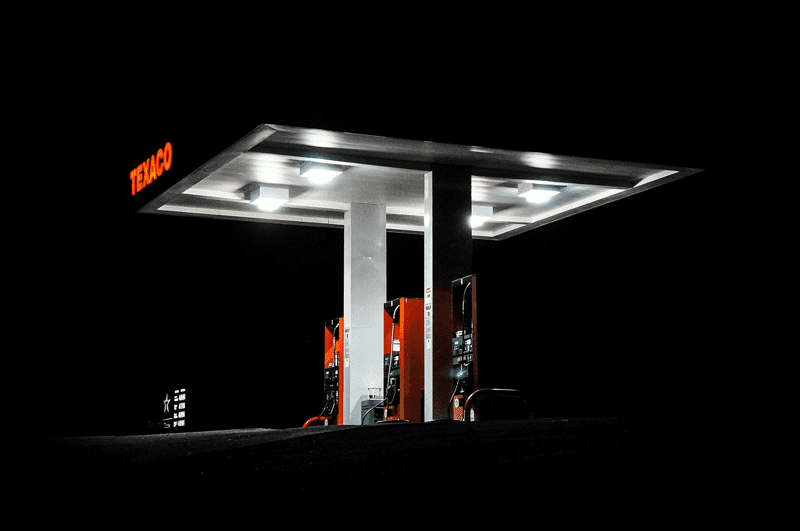Electrification has changed many industries and oil is no exception. Leaders realize there is a growing push to make sustainable choices whenever possible, which means relying on electricity rather than fossil fuels when possible.
New Regulations Contribute to the Transition
Sometimes, emerging rules cause oil industry leaders to realize they cannot wait any longer to move to electric equipment. Some lawmakers have already set decarbonization timelines for them to follow. The United Kingdom’s North Sea Transition Authority has said sector participants cannot establish new rigs until they take decisive steps to cut emissions.
More specifically, that means the equipment must run on green power or low-carbon fuels. Additionally, all new rigs used before 2030 must include designs that let them operate on electricity, and those made after 2030 need electrification from the first operating date.
However, meeting those demands will not be easy, especially since some of the North Sea’s rigs date back to the 1970s and will be exceptionally costly to decarbonize. Some will require running shore-based power cables to them or building wind farms close enough to those structures. The massiveness of this undertaking requires decision-makers to think carefully and creatively about the best strategies for individual rigs.
In other cases, residents’ pushback drives the electrification switch. Such is the case for Colorado’s Aurora Reservoir and plans to drill more than 166 wells there. Regulators only allowed the work to proceed if the operator electrified the site. That decision came after hundreds of residents gathered to give several hours of testimony, with nearly all commenters opposing the drilling. Requiring the use of electric equipment will provide cleaner, quieter results.
These are examples of how decision-makers must respond to factors influencing the business landscape. Even if specific regulations are not yet in effect, there is a larger push toward emissions reductions and greener operations. Preparing for that change by exploring electrification options is a practical way to stay relevant and competitive in a changing sector.

Safety and Efficiency Become More Accessible
The gas industry’s midstream operations alone include hundreds of thousands of workers operating billions of dollars’ worth of machinery. Although it is impossible to eliminate risk, electric equipment can reduce it while enhancing productivity. For example, some rigs have stepless speed regulation capabilities that help workers more accurately control hoisting, circulating and other movements necessary for productive outcomes.
Additionally, electric equipment supports complementing innovations, such as connected sensors. They allow remote monitoring and provide up-to-the-minute details. Then, as soon as technicians see unusual statistics or anything that could compromise safety, they can act before accidents happen. However, using connected sensors suitable for explosion-prone environments is crucial for maintaining safety and ensuring electronic equipment does not create risks by overheating during operations.
Electrically powered oil machinery can send data to specialized analysis platforms, giving decision makers the necessary insights to better oversee all operational stages. The information can enable breaking down productivity by the hour or other time frames and then using those details to plan feasible workflows.
In one example from outside the oil sector, smart sensors revealed a critical part would fail in 58 hours, encouraging leaders to act promptly. When they get those valuable details, they can source replacement components or schedule urgent service calls to prevent costly downtime.
Many electric oil rigs also have advanced programming capabilities, reducing manual operations that could lead to mistakes or confusion. Such advanced features, combined with the safety training workers receive, significantly reduce accident rates and make roles safer for everyone involved.

Operators Enjoy Various Benefits
Leaders understandably want to learn about electrification’s advantages before embracing it. However, most are increasingly aware of various pressures that make electric equipment especially attractive. Jennifer Hiller is a reporter who recently covered the sector’s electrification boom, and she confirmed numerous aspects are influencing the change.
For starters, connecting to the grid for power is often cheaper than sending diesel-powered trucks to remote locations. Additionally, oil executives must answer to investors who frequently demand they reduce their emissions. Electrification is one of many ways to meet that goal and show stakeholders measurable progress.
However, a potential concern is the industry’s increased dependence on electricity could strain the grid at precisely a time when electric vehicle adoption rates are rising and many global leaders have set emission reductions targets for transportation. Hiller also mentioned that some estimates suggest the sector could approximately halve field emissions through electrification rather than fuel power.
Business success requires attention to emerging trends, and some operators have pivoted to electric vehicle charging infrastructure investments. That move makes sense, considering how many already own gas stations. If those become less prominent or people do not visit them as frequently, oil executives will need to find new profit streams. Recognizing EV charging stations as potential new options to support the bottom line is a smart move that could pay off in the long run.
Shell and bp are among the oil companies that have recently made significant EV charging investments, and others are putting their resources into battery-related developments. That is a sensible decision, since some vital equipment runs on batteries, too.

Changing Times for the Oil Industry
Staying aligned with developments allows the oil sector to keep pace with sustainable priorities and respond appropriately to those who increasingly expect emissions-reducing strategies. Leaders can prepare for the shifting landscape by establishing numerous time-based targets that allow progressively adopting electrified equipment. They must also determine adequate budgets and train employees to operate and service the electric assets. Relatedly, they need to become familiar with the advantages and disadvantages of electric equipment and understand the best ways to minimize adverse effects.
Decision-makers will get the best results by taking a top-down approach to motivate everyone and help workers understand why now is the right time to use electric equipment as appropriate. A complete transition to electrification will take years of careful analysis, but it is an excellent time to focus on the most fruitful efforts before expanding to tackle the more challenging needs.
Emily Newton is the Editor-in-Chief of Revolutionized, an online magazine discussing the latest industry innovations and trends.






